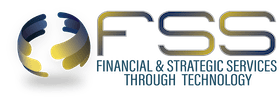-
We initially started with the installation within the client’s Cloud environment.
Due to the client’s cloud environment being a multi-tiered installation, our first setback was in the primary phase of the project. The two machines, the database server and the Application server, were not in the same domain- they were just separate machines with a Public network.
-
It became a demanding challenge to establish a connection between all of them.
Even though the necessary ports seemed to be open, we could not get any communication between the two servers. In the end, special rules had to be created by our FSS Team in the Firewall and in Windows permissions to allow for such a connection.
-
But the most gruelling problem of all was yet to come: as soon as the servers were moved in a domain, all the connections were lost!
s a result, we had to rename and recreate several users and user groups. In the end, it was with late night discussions and in-depth brainstorming that we could finally overcome this lucrative hurdle. Finally, the system was now ready for the User Validation 1.
-
All-in-all the project was a success!
It was delivered on time and within budget, despite the heavy setbacks that arose. This success was due to the dedication of the teams involved as well as great communication and response time from both the users and the support teams (IT, consultants, 3rd party application developers and ERP producer).
To sum up important learnings of the project, and provide a how-to for our readers, we recommend:
-
Ensuring the cloud environment is in your own infrastructure before deploying (make sure you test all the features and functionalities of it too!)
-
Setting up ongoing communication with the customer’s IT/infrastructure team to ensure all parties understand the naming conventions, access permissions, IP addresses, priorities and firewall rules before deploying
-
Ensuring that you have the final environment configuration when installing SunSystems v4.3.3 in Cloud (meaning the set up should be the same after Go-Live, to avoid repetition)
-
Whilst on-site, testing the access with every single user before any validation
-
Preparing a list of all User Groups, Users and permissions that will be needed for setting up the system (make sure you obtain those permissions in timely manner)
-
Double (and even triple!) checking with the users what the connected applications are that will be needed in their daily operations
-
Being aware that MS Access tools could become challenging, as the application itself seems not to be able to keep up with the evolution of the technology and Cloud environment
-
Ensuring that all users have the knowledge, the means and the time to properly test all their systems after the migration
